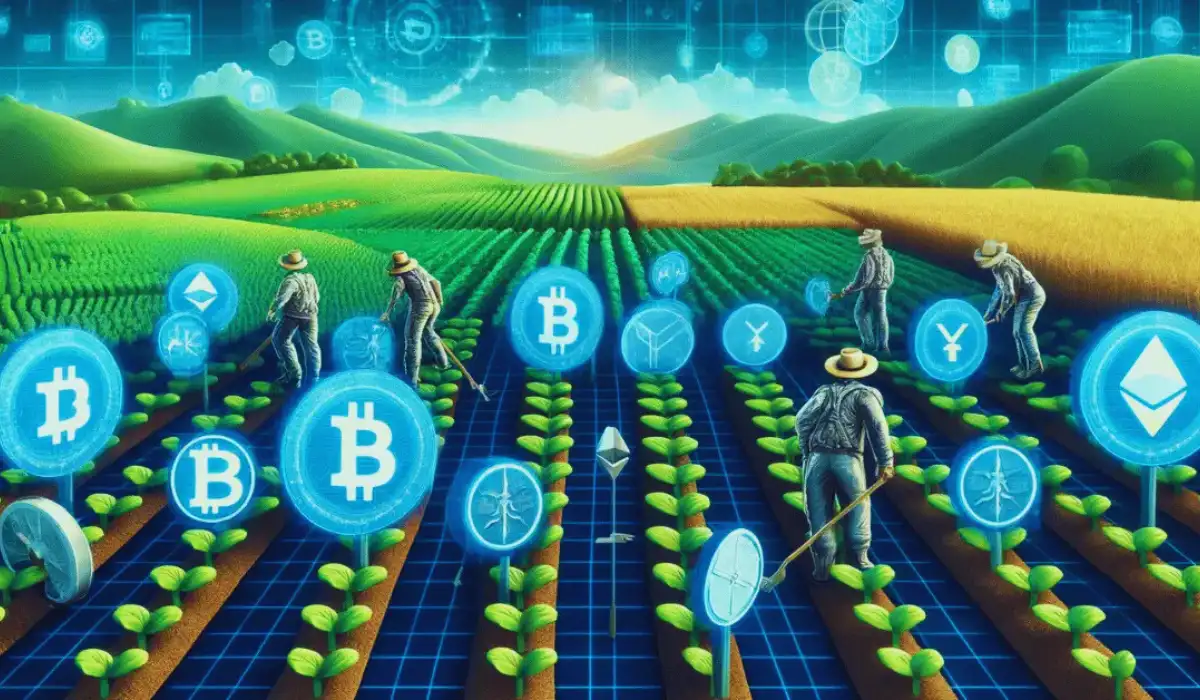Yield farming refers to a way of earning rewards by depositing cryptocurrency or digital assets on a decentralized application (dApp). This is one of the common ways to earn passive income from cryptocurrency. Yield farming allows investors to earn rewards as tokens by placing their digital coins or tokens on a decentralized platform to provide liquidity to various liquid pools.
How does yield farming work?

Decentralized applications attract investors by offering rewards for their deposits. A person interested in yield farming can deposit their digital assets into a smart contract that will hold their assets and keep track of the rewards earned over time. While there are different methods of yield farming, the most common ones include liquidity providers or yield farmers depositing their assets into a liquidity pool on a DeFi protocol for earning rewards. Let us look at the workings of a yield farming process.
- The first step involves choosing a yield farming protocol.
- The investors can then click on the liquidity option to search for other liquidity providers on the decentralized platform.
- The third step involves choosing the digital assets the investor is willing to deposit in the liquid pool.
- The investors receive an LP token after depositing their assets into the specific liquid pool.
- They can then take the LP token go to Farms deposit in the selected yield farm and start earning rewards.
- Investors are also rewarded with governance tokens by DeFi protocols that they can later use for voting their decisions on the decentralized platforms and can also use them for trading purposes.
Popular yield farming platforms
The process of selecting a yield farming platform is crucial and the investors have to consider certain factors before choosing a platform. In addition to safety measures and popularity, a valid yield farming platform must include the available digital assets and yields and the frequency of reward distribution. Let us look at some of the popular yield farming platforms.
Uniswap: Uniswap is one of the most popular yield farming platforms. It is a platform built on the Ethereum blockchain and is known for its simple and user-friendly structure. Uniswap’s liquidity pool allows investors to increase the interest they receive from their digital asset holdings. For each swap, the yield farmers or liquidity providers will receive a percentage of the trading fees.
Aave: It is a leading decentralized yield farming platform built on an Ethereum blockchain network. The non-custodial nature of the platform allows the users to lend and uncontrollably borrow cryptocurrencies. Users can deposit their digital assets on liquidity pools and earn rewards from their deposits. On the other hand, the borrowers can borrow the deposited assets as collateral to purchase cryptocurrencies.
Compound: Compound is also a decentralized platform built on Ethereum. Compound yield farming works by supplying liquidity into the liquid pools and earning rewards as COMP tokens. The rewards can be used by users in the decision-making process of the platform.
Benefits of Yield Farming
Passive income: One of the standing benefits of yield farming is that it allows the users to earn a passive income. The investors can deposit their digital assets for a set period and earn rewards without even actively trading.
Offer higher returns: Yield farming can provide higher returns than traditional investing methods. Investors can increase their digital assets by earning rewards from different platforms.
Risks associated with yield farming
Smart contract risks: Smart contracts are codes that perform certain functions without any human intervention. DeFi platforms are built on these smart contracts. The major risks associated with smart contracts are that they are vulnerable to eros and bugs posed by hackers. This can lead to the loss of the deposited assets.
Impermanent loss: It refers to the loss of value that occurs when the price of two tokens in a liquid pool changes significantly after the user has supplied liquidity to the liquid pool. This situation can cause major losses for the yield farmers.
Yield Farming v/s Staking in Cryptocurrency
Yield farming and staking are the popular ways of earning passive income from cryptocurrency. People often get confused about the two terms. Even though both methods can be considered to earn passive income, they differ in their mechanisms.
The major difference between the two methods lies in the potential rewards and risk factors. Yield farming offers higher returns and rewards compared to staking which offers lower rewards. However, there are many risk factors associated with yield farming like platform issues, price changes, and loss of digital assets. Staking cryptocurrencies involves certain risks like penalties, slashing events, and network issues. Another difference is that yield farmers do not lock up the digital assets and they are free to supply liquidity to liquid pools. While in staking the stakeholders cannot withdraw their assets after the set period is over. The lock-up period can go up to a few weeks or even a few months.

